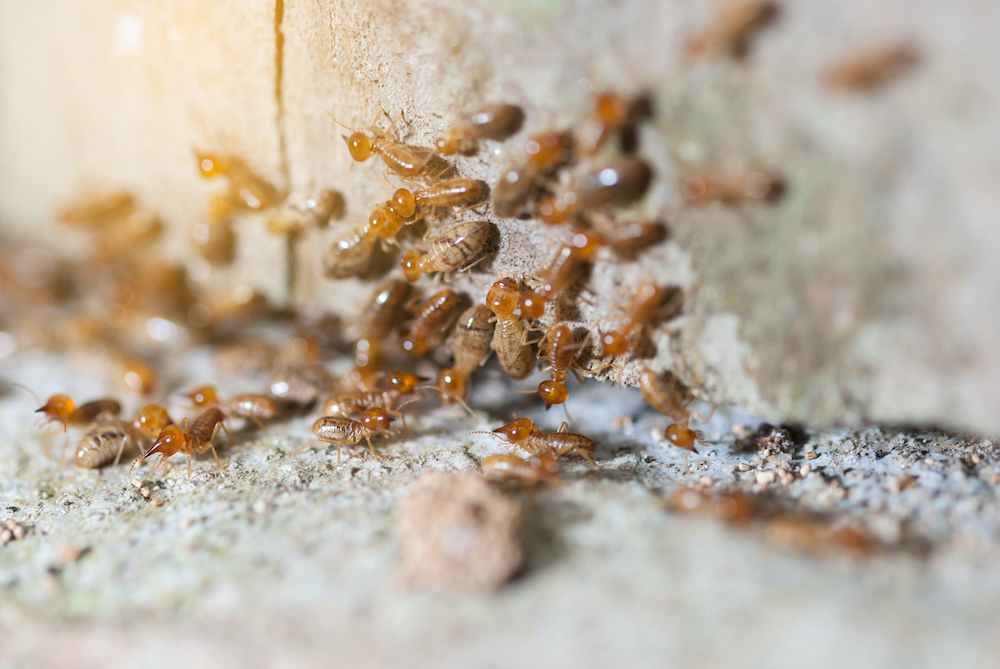Biology of Eastern Subterranean Termites
Eastern Subterranean Termites are the only type of termite you could expect to see in Minnesota. These have dark brown bodies, and grow up to ⅜ inches in length, typically living for 1-2 years. They reside in any wood touching soils, such as wood piles, tree stumps or rotten root systems. Overwintering can occur under the frost line or in a home, but does not include a decrease in activity level. They can access the wood in your home by utilizing mud tubes to reach them. There are three castes within a colony: Workers, soldiers and alates (swarmers/reproductives) Only alates possess wings. Colonies can number 20,000-5,000,000 termites and span acres.

Termites do not sleep, remaining active at all hours. The youngest termites take care of eggs and similar tasks, becoming more specialized as they age. Mature termite workers will move on to excavating and harvesting wood. All three castes need moisture at all times, so workers create mud tubes for transit above ground. For example, termites entering the home at the bottom of the siding will create a vertical mud tube up the outside of the foundation to reach that point. In some conditions termites will create castle tubes up to four feet tall, and made of countless mud tubes built together.
Food sources include wood and plant material, or anything with cellulose. All workers have assigned jobs, keeping many of them too busy to go get food. Other termites will instead eat the wood and dead termites, then return to the colony, regurgitating it into the other workers’ mouths.
A primary queen can lay anywhere from 5,000 to 10,000 eggs a year. Most will become workers, while some will become alates. Male and female alates are born, and will shed their wings and begin excavating their nest together after a swarm, becoming the queen and king of the new developing colony.
New termites will otherwise hatch from their egg and turn into a worker. Most termites will remain a worker for the rest of their lives, but some will later molt into soldiers. Colonies are comprised mostly of workers, with some soldiers and few alates. Soldiers have a distinctive protrusion on their front end, and will not molt further. Reproductive termites can be differentiated by their wing buds.
Swarms can be triggered by colony overpopulation or danger, including from a pesticide treatment. These are typically seen in spring and late summer. Drones that are both blind and deaf will get kicked out in the hundreds, letting the wind carry them until they fall up to four miles away. They will all start digging, with alates dropping their wings and becoming a new queen and king.
Contact Us Today For Eastern Subterranean Termite Prevention!
Please fill out this form if you are interested in Eastern Subterranean Termite control services. A representative of Abra Kadabra Environmental Services will be in touch with you shortly



